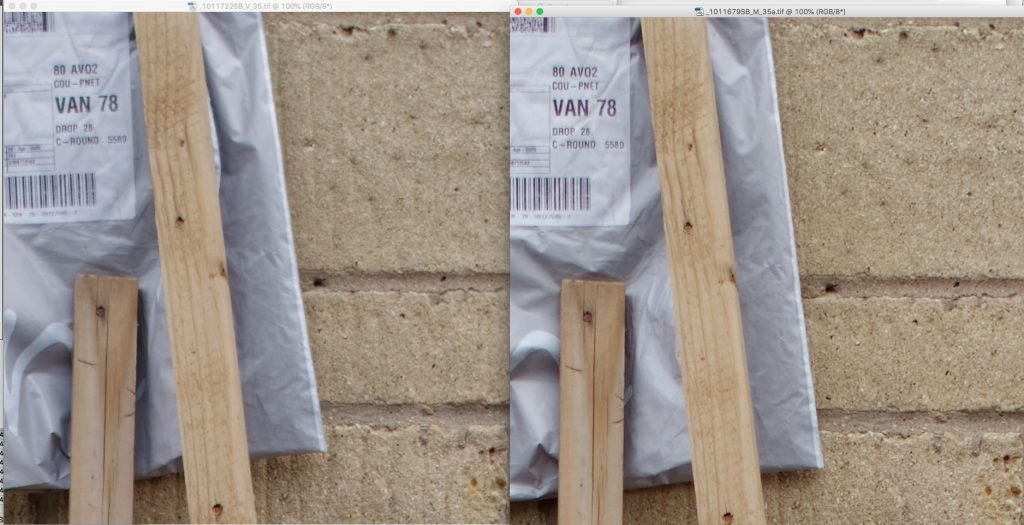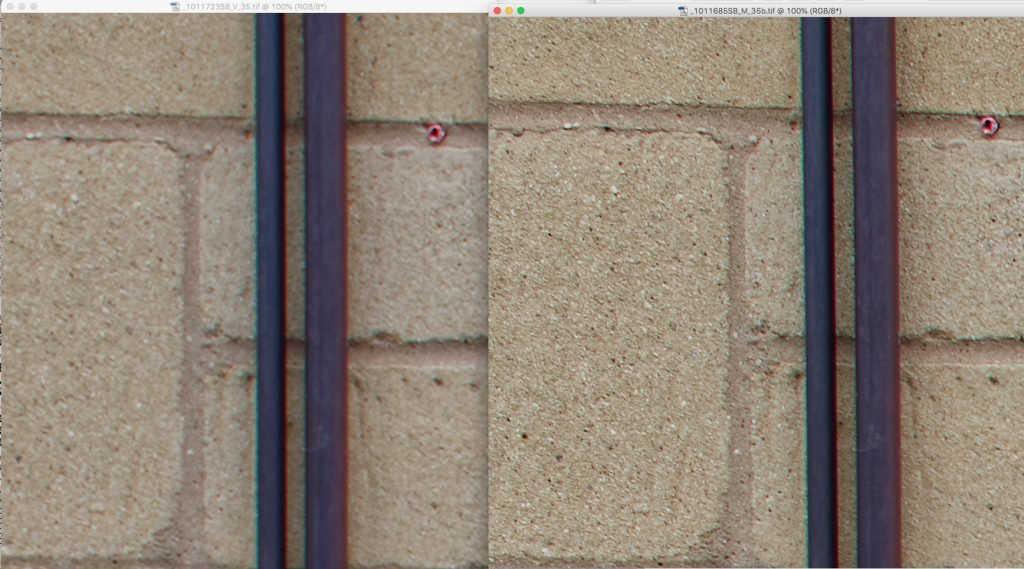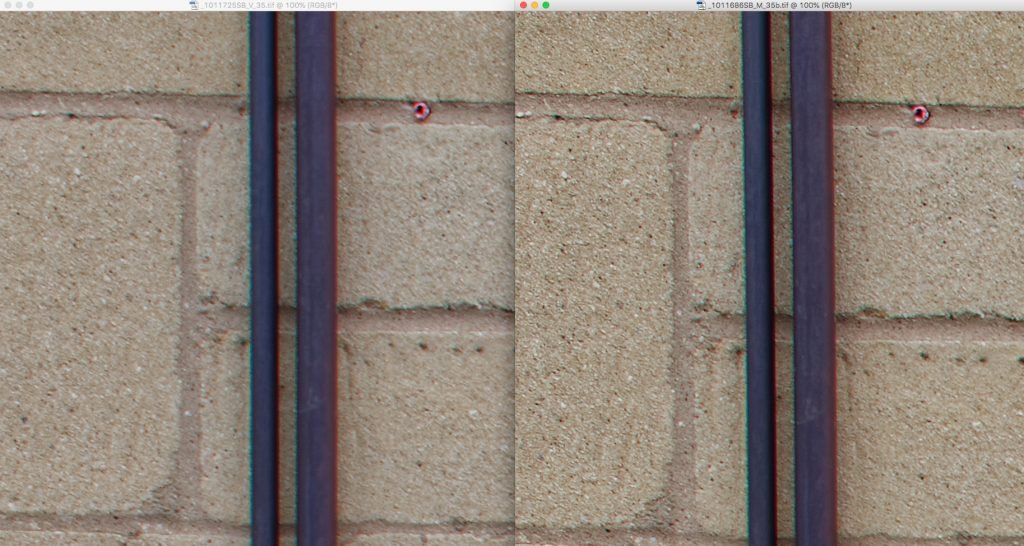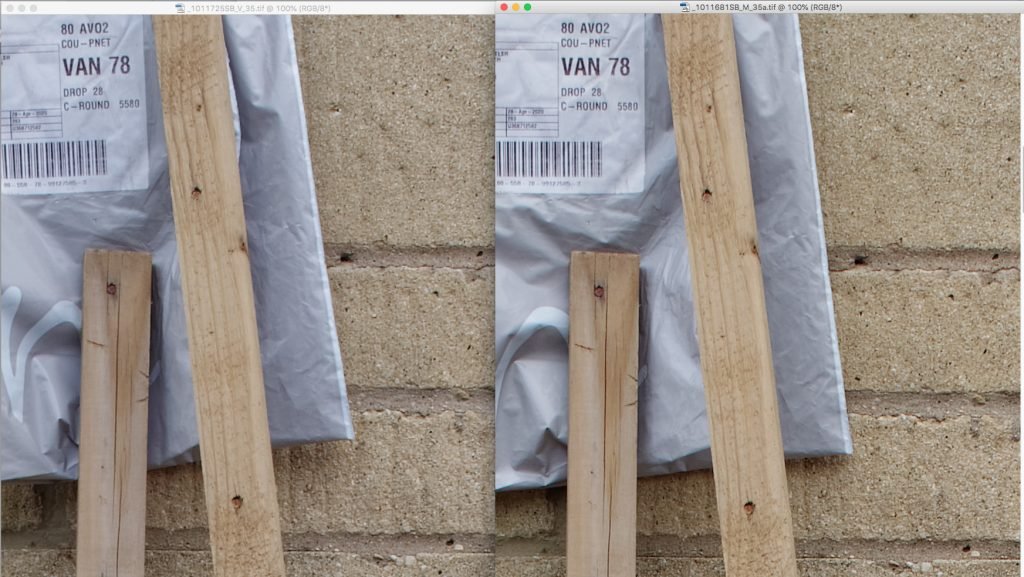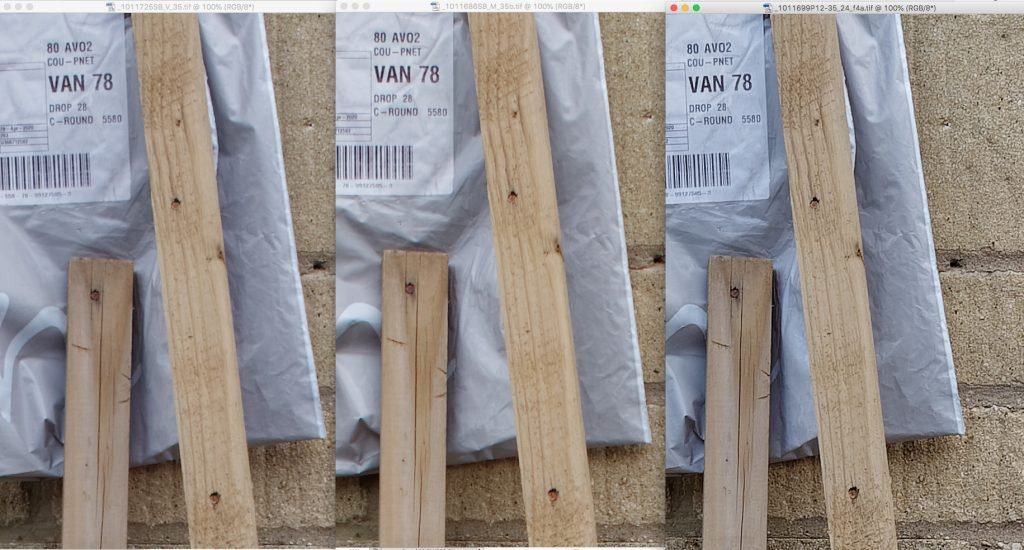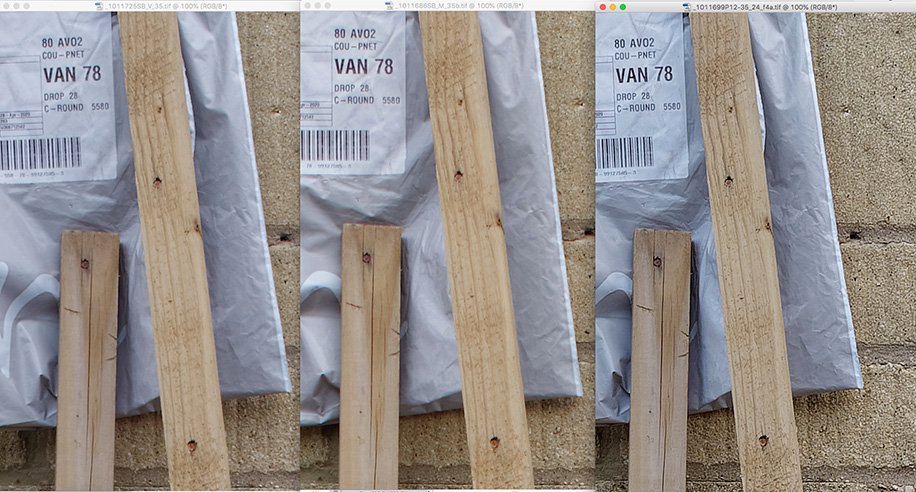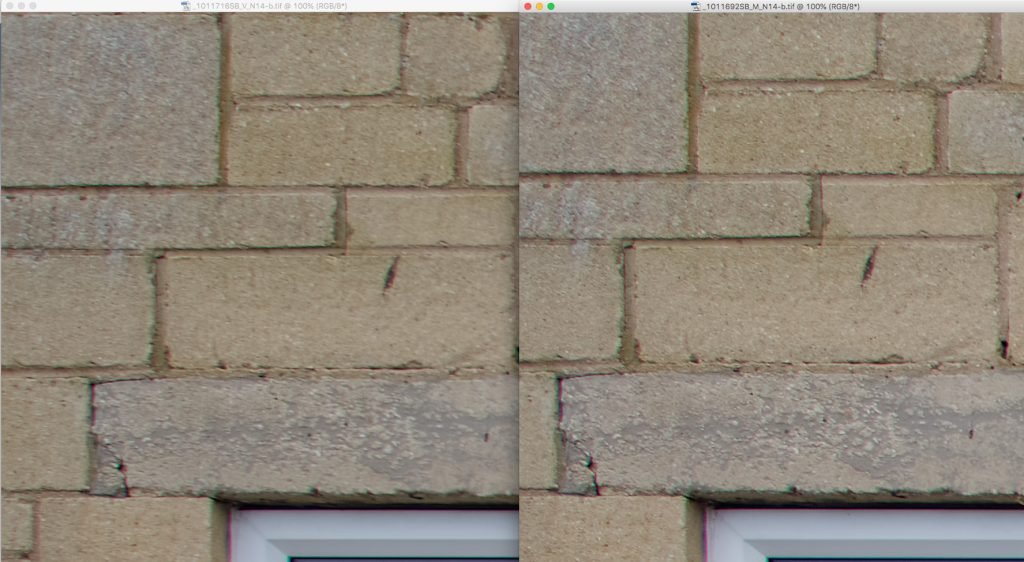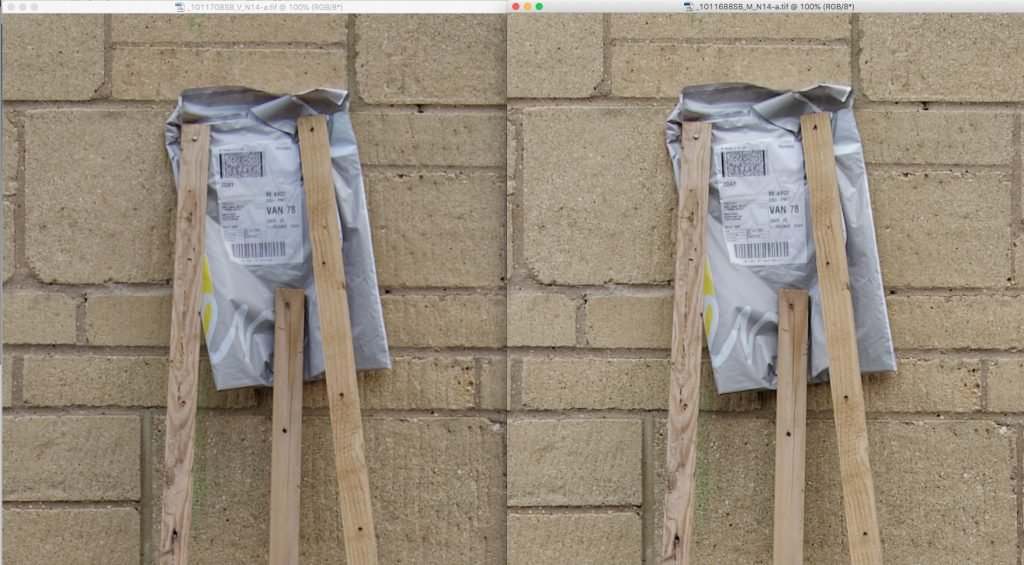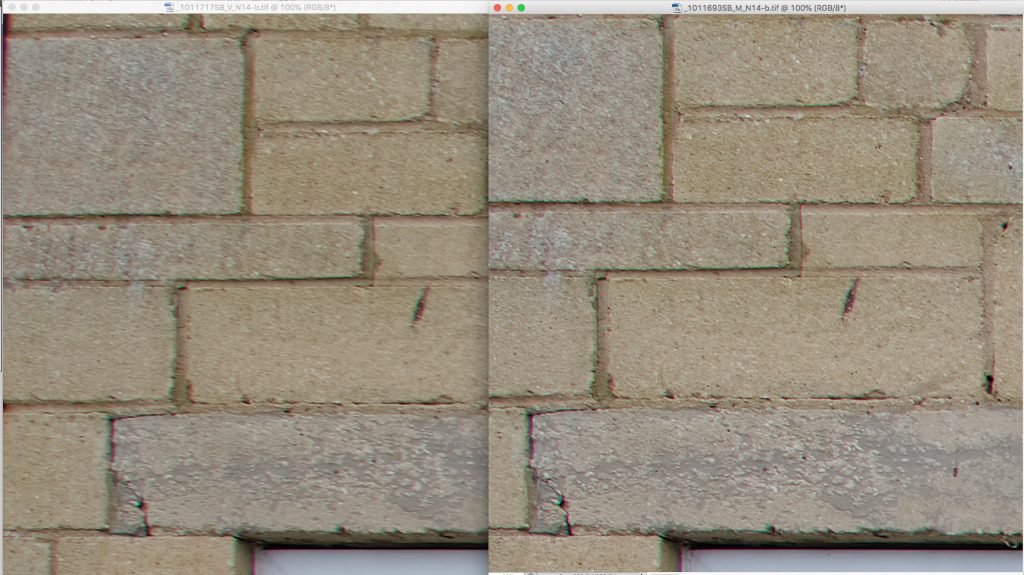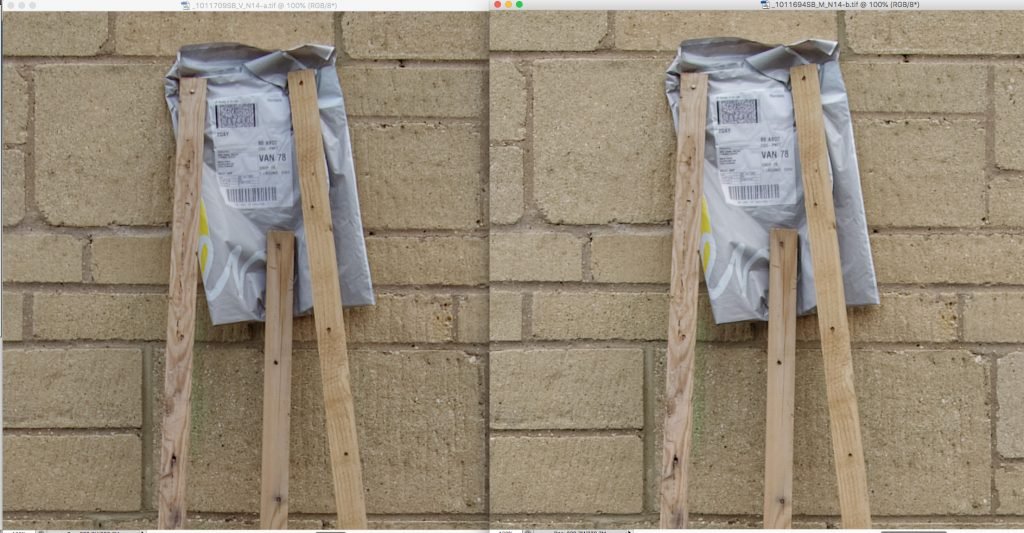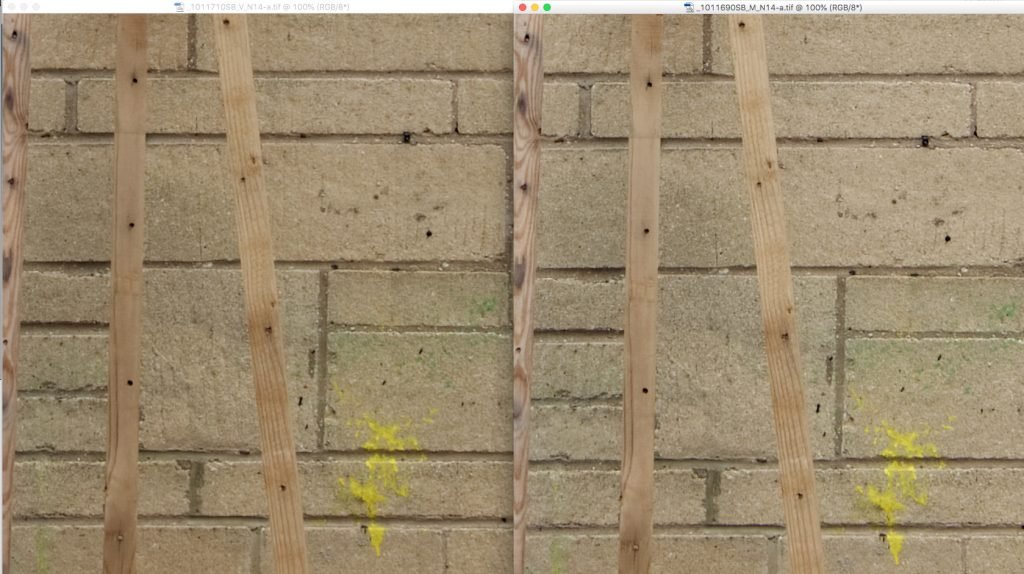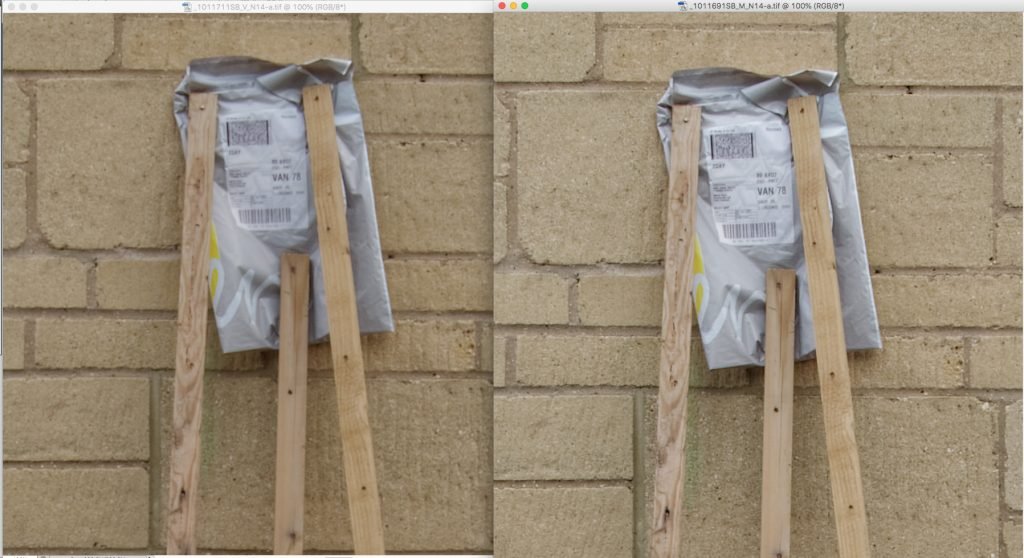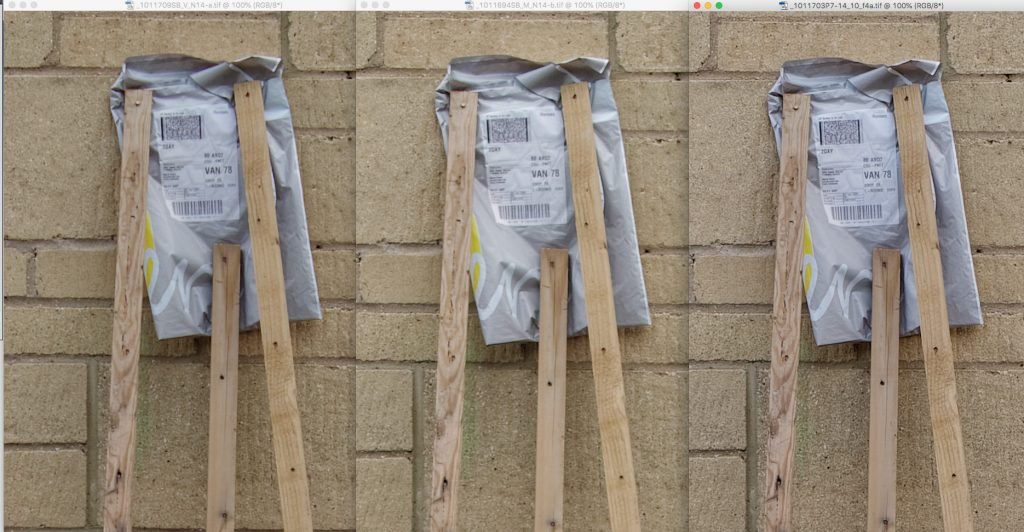Metabones Ultra v Viltrox II
Metabones did it first, but so did Xerox (with Windows) and look how that turned out. Is the superficially identical, significantly cheaper Viltrox Speedbooster a democratically-priced refinement, or a second rate rip-off?
For many, the pricetag is the most important stat. A Nikon user perusing eBay faces the persuasive maths of £130 v £390. A Canon adapting small-sensorist is confronted by the even starker differential of £130 v £590. But let’s not get distracted from the business of how well they work by, well . . . business. The fact is: you rarely get what you pay for: margins make prices. The higher the cost of living in the country of manufacture, the greater the overhead and more the margin. Reseller aren’t charities: ultimately, buyers finance distribution chains of variable length and receive variable after-sales service. Products sold at bricks-and-mortar stores (remember them?) and stuff you’ve seen advertised also have routes to market subsidised by consumers in the form of inflated retail pricing.
Here we’re comparing a lean, direct-to-eBay product manufactured in Shenzhen with one designed and engineered in Canada and America, made by Hong Kong and China, and distributed by a network of resellers. To put them on a level playing field, we should double or triple the cost of the Viltrox.
That said, is the Metabones a better product? No doubt the Viltrox apes the Metabones shamelessly. Brian Caldwell saw the need, recognised the potential of a paraxial lens, filed the patents, and justifiably takes credit for its existence. Metabones is diversifying and developing its range; Viltrox and the others are playing catch-up.
But, does that necessarily make it a worse deal? We admire innovation and might pay lip service to ‘supporting’ it, but at the end of the day we vote with our pockets to put bread on the table and we’re over the moon if our silk purses have silver linings and our clouds look like pig’s ears . . . I’m drifting. The point is that if the Viltrox does the same job for a third of the price, it’s hard to resist.
And it almost does.
But not quite. The first clue is in the hand: the Viltrox II for Nikon weighs 145g; the Metabones Ultra weighs 177g. You sense immediately that the Metabones has better glass, just as expectations rise when first hefting a Voigtlander.
The Metabones is better engineered in the little things, but the Viltrox isn’t by any means badly made: fit and finish is acceptable. They both seem like precision tools. The Metabones mates better to an MFT body; the Viltrox is a better fit to the Nikon lens (it has some rotational play in the body-side adaptor assembly).
The Viltrox is easier to adjust for infinity focus, which needs to be done on a lens-by-lens basis: you can’t adjust the adaptor and have it fit all your lenses, otherwise that would have been done before you took delivery. The shorter the focal length, the nearer the sensor the speedbooster must be set. Failure to achieve correct infinity focus will swiftly compromise performance with either adaptor.
Here we compare adaptors using two high quality targets: the Sigma 35mm f1.4 Art and Nikon 14-24mm f2.8. For comparison, each scene was reshot with equivalent MFT lenses. The Sigma (becoming 25mm f1.0) was compared to the ready reference of the Panasonic 12-35mm f2.8. The converted Nikon 14-24mm was tested at 14mm f2.8 >> 10mm f2 against the known quantity of the Panasonic 7-14mm f4.
All images were shot using the Panasonic G9’s HighRes mode which generates unpacked files of 80MP / 230Mb and amplifies lens aberrations. Where present, DXO’s lens profiles were used during RAW processing. When unavailable, modest sharpening, barrel distortion and Edge Offset settings were used to reach toward parity with Panasonic lenses that benefit from full correction profiles.
NB: Please set your browser to full screen, or download and inspect screen grabs in an image editor. Click to enlarge . . .
Sigma 35/1.4 >> 25mm at f1.0 (centre frame, 100%)
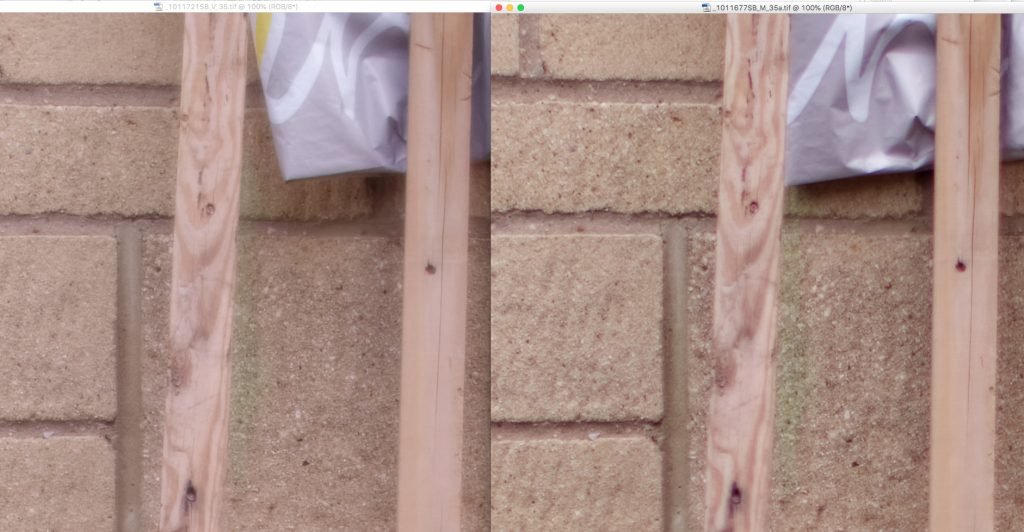
Distribution model aside, that’s what you pay for. With the Sigma 35mm f1.4 manually set to f1.4, giving an effective aperture of f1.0, the Viltrox adaptor is shown to completely smear fine detail. Contrast is lowered, and veiling haze is present. High frequency MTF of the target lens is badly reduced compared to the Metabones which might actually increase it slightly: centre frame, this is fractionally better than a bare Sigma 35mm at f1.4 – almost useable. For 4K video work, the loss of resolution will be less obvious, but veiling haze is still visible.
Sigma 35/1.4 >> 25mm at f1.0 (corner, 100%)
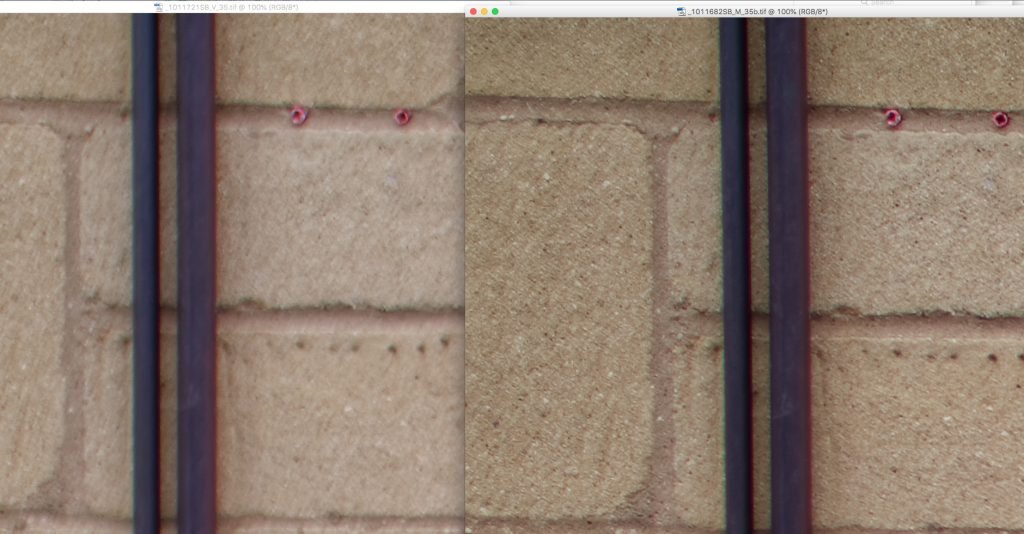
The advantage of the Metabones is even more blatant in these extreme (top left) corner crops at f1.0, although we observe slightly more vignetting here than the Viltrox adaptor. None of these images were corrected for light fall-off. While showing obvious softening, for an 80MP capture at f1.0 this is an impressive level of per-pixel sharpness for an extreme corner crop. For a sanely priced prime on a surprisingly costly adaptor on an undervalued camera, it’s remarkable. The resolving capability of this combination is hardly class-leading, but aberrations are relatively low.
As we stop down, the Viltrox closes the gap somewhat until centre frame performance is almost matched by f2.8, although corners lag palpably at all apertures.
Sigma 35/1.4 >> 25mm at f1.4 (centre and corner, 100%)
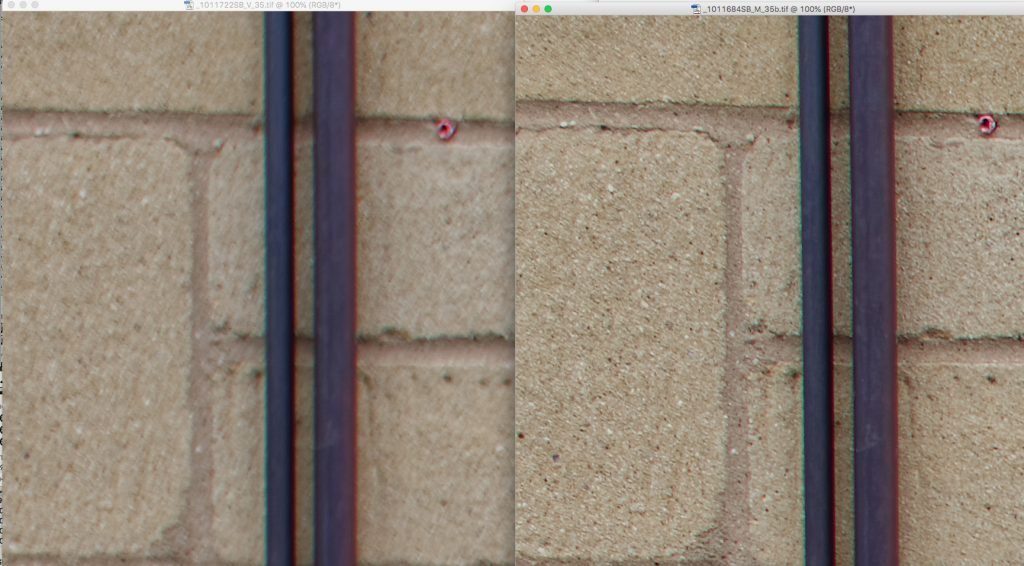
Sigma 35/1.4 >> 25mm at f2.0 (centre and corner, 100%)
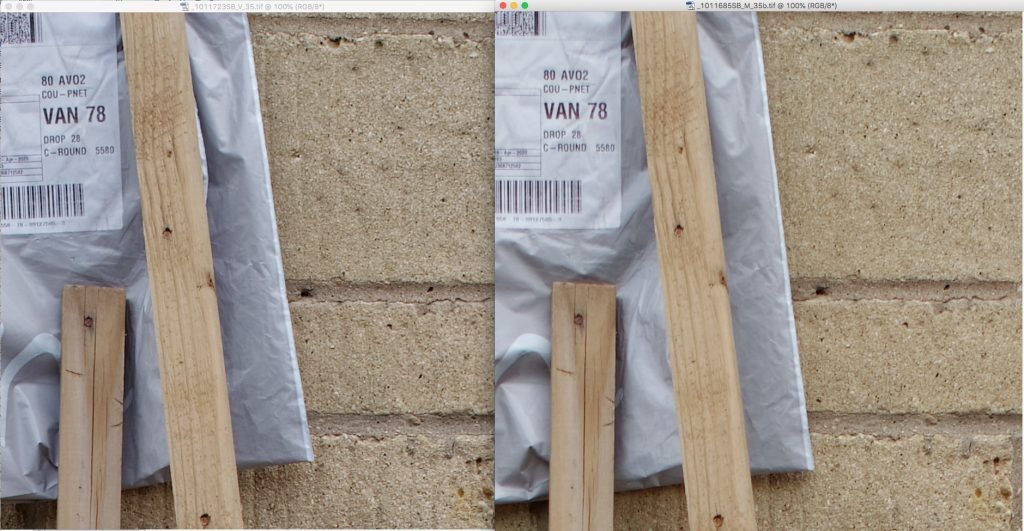
If you’re really eagle-eyed, you’ll notice that the Viltrox adaptor seems to have a funky little resolution spike one stop down: it’s fractionally sharper centre frame here. I would have written this off to pixel-shifting weirdness – sometimes stuff happens when you’re shooting every capture as a multi-frame composite – but another review noted a similar ‘f2.8’ bump using the Viltrox speedbooster. Sadly it doesn’t help it’s outer image circle.
Sigma 35/1.4 >> 25mm at f2.8 (centre and corner, 100%)
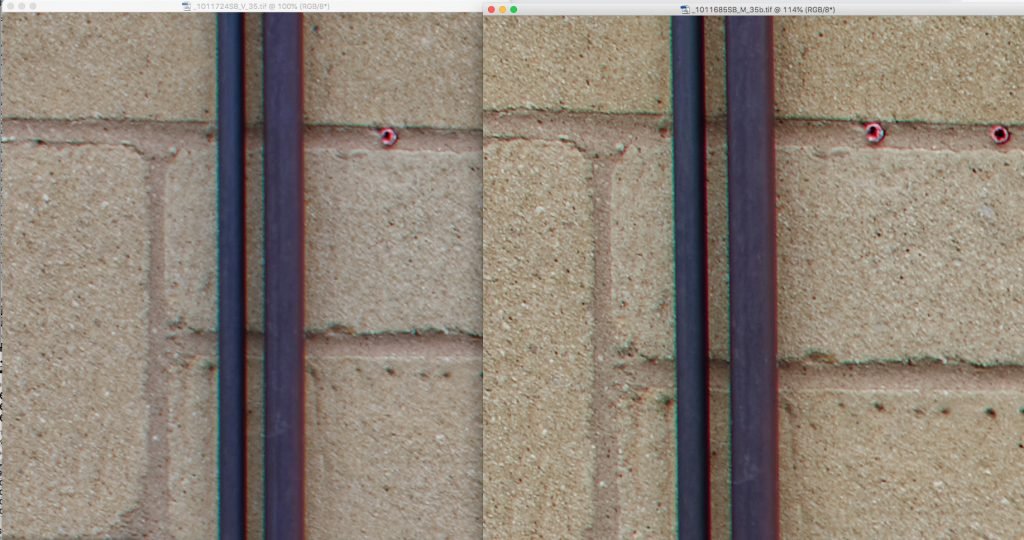
The Viltrox is again fractionally sharper in the very middle of the frame, but way softer elsewhere.
Sigma 35/1.4 > 25mm at f4 (centre and corner, 100%)
Judged by the criterion of sub f2 performance in standard lenses, the speedboosted Sigma 35mm, or Sigma 18-35mm, is quite credible. However, before we get carried away, let’s compare peak performance (f4) from this combo with the standard Panasonic pro zoom at the same focal length and aperture . . .
Compared to Panasonic 12-35mm f2.8 at 25mm f4
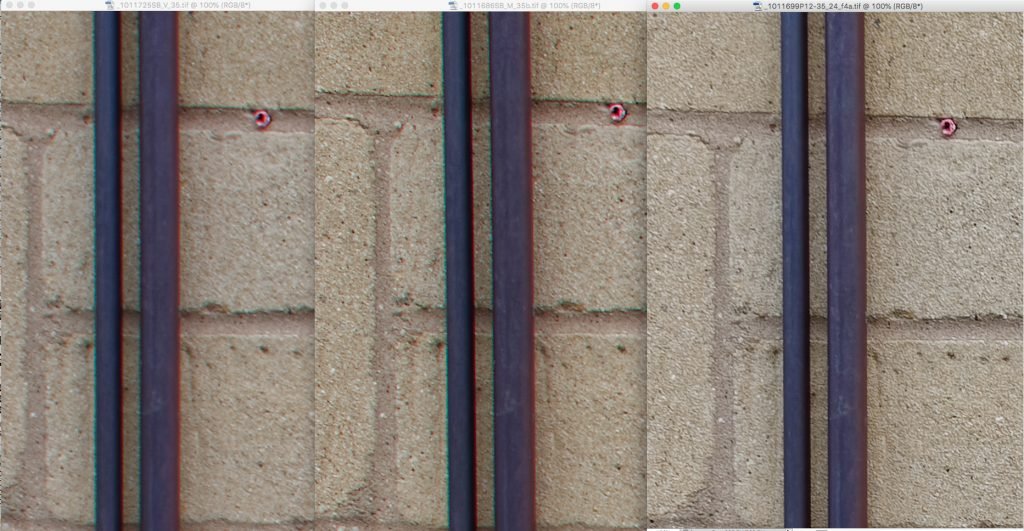
Even modest Micro Four-Thirds lenses are designed to resolve 50+lp/mm – a target not required for full frame lenses. At f4 the Panasonic capture (far right) is superior in all respects. If sharpness is a priority for stills, use a lens designed for M43.
However, some may object to such ‘pixel peeping’, especially videographers. Indeed the corner crops here presented are outside the area matted off for video on an M43 sensor. Note also that shooting 4K on the Panasonic G9 (denied full-width ‘Cinema 4K’ mode) is even less demanding of ‘corner’ resolution: 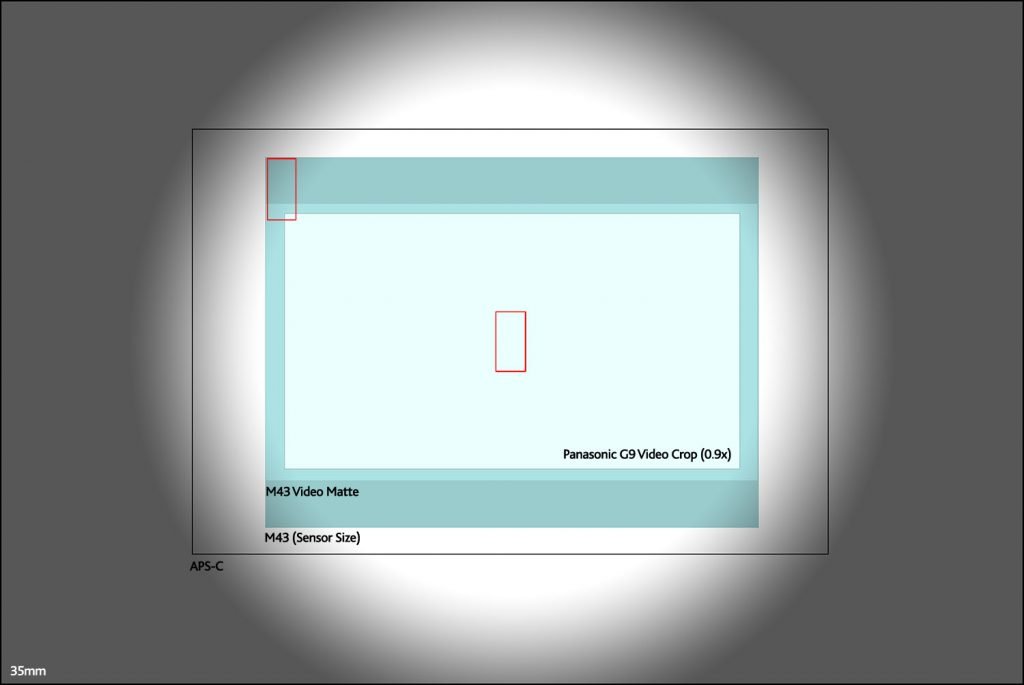
M43 video shooters are blithely unaware of outer image circle issues that make lenses like the Laowa 7.5mm so problematic for stills. Also, these are 100% crops from an 80MP pixel-shifted image 10,368 pixels wide. Do these differences matter shooting at 4K or regular 20MP? Here’s those best-case captures again, at 50% . . .
The Panasonic 12-35 retains a noticeable little bonus over the speedboosted Sigma 35mm, but the delta is undeniably reduced. That’s why all our M43 tests are in hi-res: it magnifies the effect of small differences for the most demanding applications.
Undaunted, we press on with a different target lens: the Nikon 14-24mm f2.8 speedboosted to a 10-17mm f2 (hey, Panasonic, that’s a good idea), eventually compared to the Lumix 7-14mm f4.
Nikon 14-24mm >> 10mm f2 (centre and corner 100%)
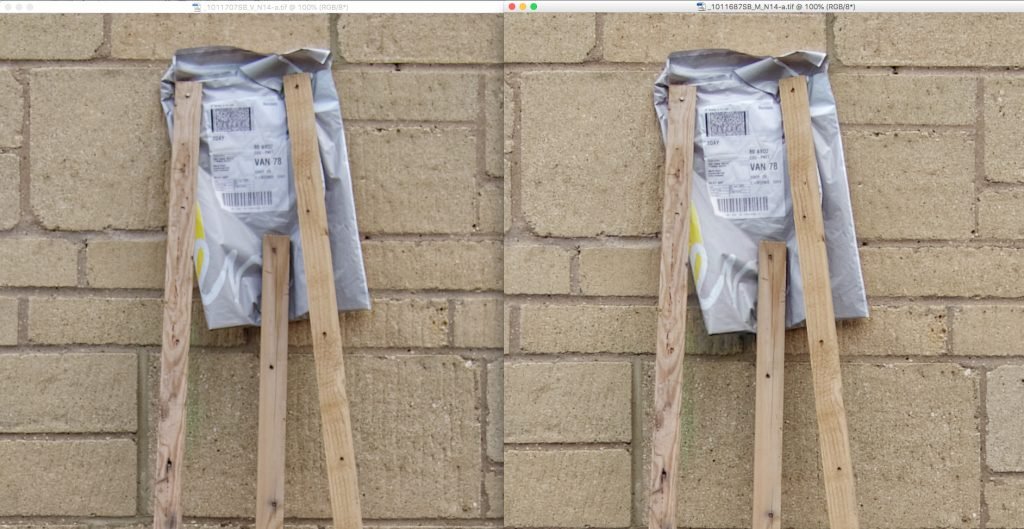
Before judging the Viltrox-adapted Nikon zoom too harshly, bear in mind that 80MP is a big ask and 10mm f2 lenses for MFT are thin on the ground: only the new Panasonic / Leica 10-17/1.7 goes there. Compared to the Leica, the Metabones-adapted Nikon is actually a hair sharper in the corner but not as acute centre frame, and CA is worse overall. Although ageing, the Nikon zoom still sets the bar high for the centre-frame resolution the speedbooster craves. It’s a perfectly viable solution for stills – although for video you are unshielded from it’s barrel distortion at 10mm (here shown corrected by DXO) and chromatic aberration.
Right now, the only lens that meaningfully improves on the Zone A performance of the Nikon 14-24mm is the Sigma 14mm f1.8 Art. Speedboosting this optic to a 10mm f1.2 for MFT might give benchmark 80MP captures. Sigma and Tamron’s 14-24 and 15-30mm zooms also resolve well at this focal length (along with inevitable barrel distortion) but don’t appear to offer conspicuously higher potential for this application.
Nikon 14-24mm >> 10mm f2.8 (centre and corner 100%)
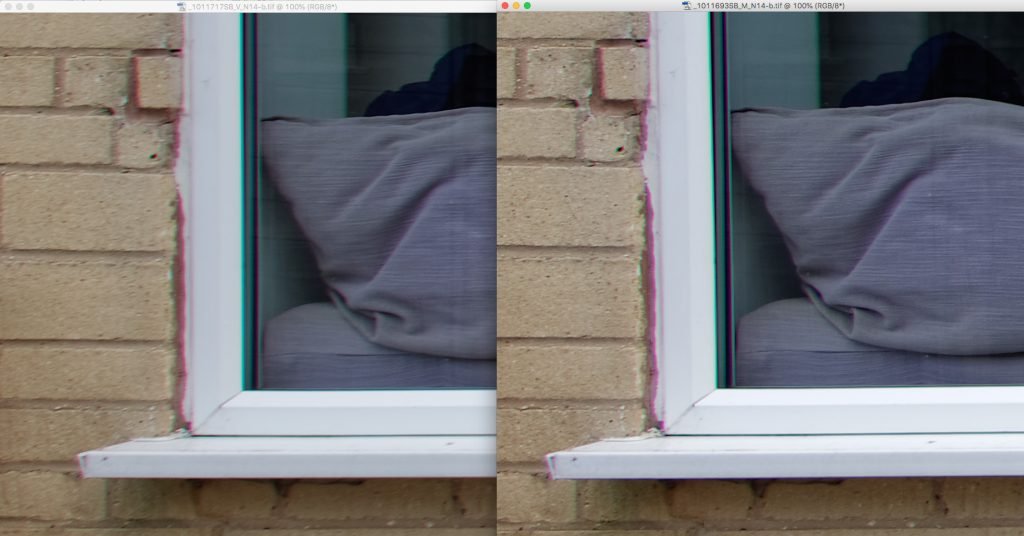
The Nikon 14-24mm isn’t much sharper in the central 3mm of its image circle at f4 than f2.8, but the outer parts of Zone A and the relevant segment of Zone B does improve noticeably one stop down. Here the Metabones (right) enjoys a clear advantage over the Viltrox II (left). Note the levels of CA in the lower left mid-frame. Two stops down, the Viltrox appears to level up, although this begins to look more like uncovering limitations of the target lens . . .
Nikon 14-24mm >> 10mm f4 (centre and corner 100%)

Nikon 14-24mm >> 10mm f5.6 (centre and corner 100%)
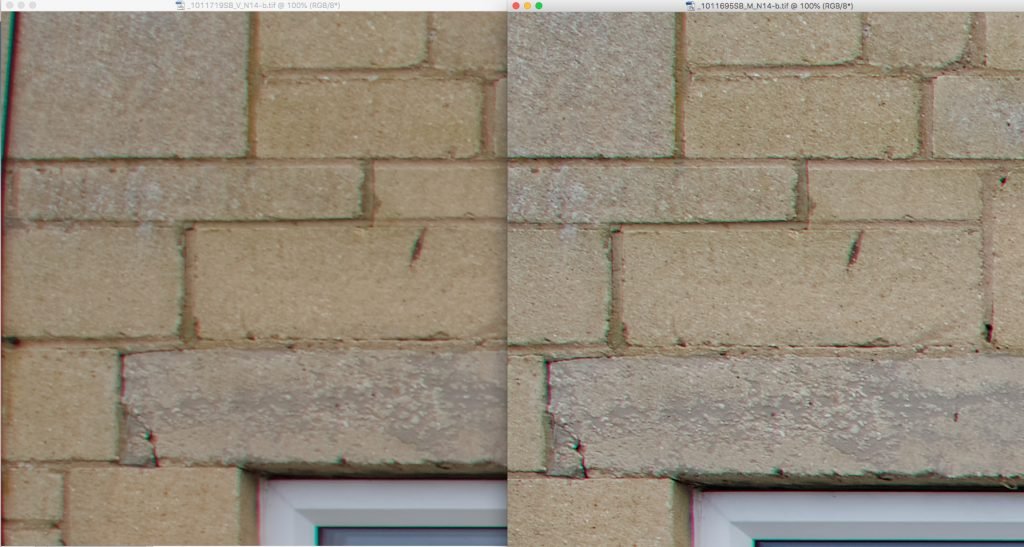
Nikon 14-24mm >> 10mm f8 (centre and corner 100%)
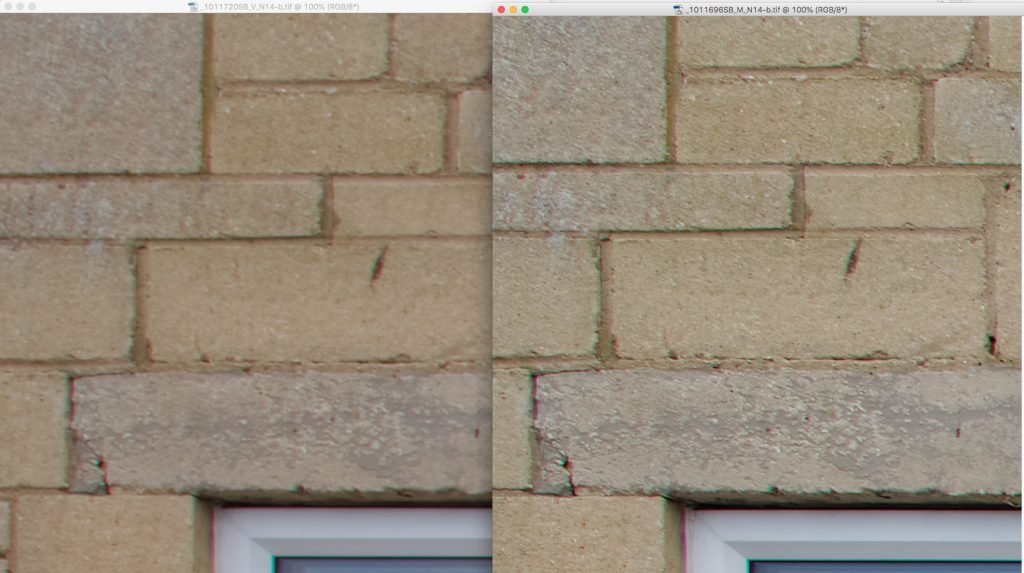
We now compare the best-performing combinations with a native M43 wide angle at 10mm: on the far right: the Panasonic 7-14mm at 10mm/f5.6:
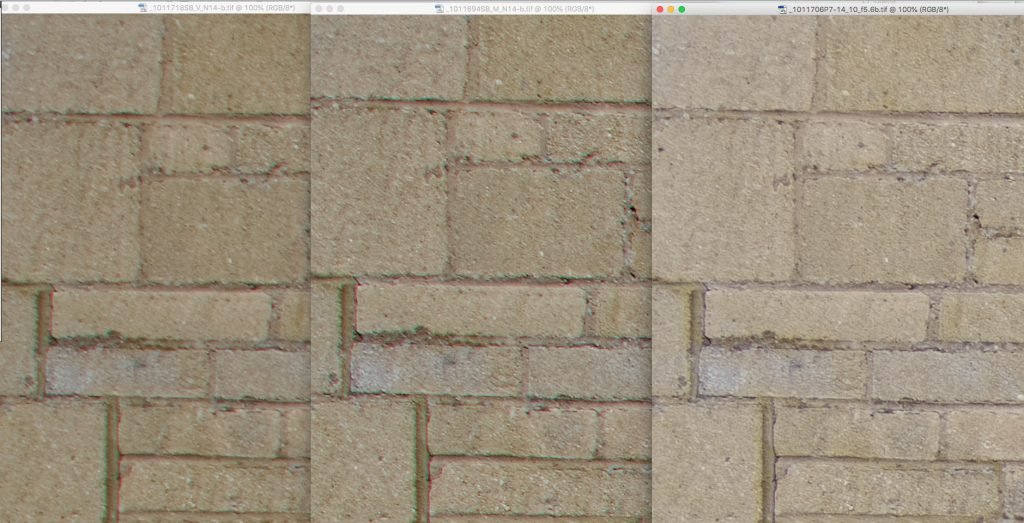
The Panasonic 7-14mm is clearly sharper centre frame than the adapted lens – again confirming the resolution superiority of lenses purpose-built for the wee format. But M43 wide angles really struggle to deliver sharp corners. Here the larger lens’ uniformity over a wider area awards it a narrow win – somewhat marred by CA.
Before laying this to rest, I wanted to address a concern over lens profiling: the final comparison images can’t help but favour the native lens by virtue of its optimised path through RAW processing. DXO never saw the need to create a module specifically for G9 shooters working in HiRes using Nikon 14-24mm G lenses on Viltrox and Metabones adaptors. Strange, that. So when we pull those 132Mb RAWs into DXO, they are immediately spruced up and ready to go: variably sharpened and corrected for the full spectrum of aberrations. Subsequently, I revisited the speedboosted captures, manually built a rudimentary profile and tried to equalise the sharpening. DXO persistently oversharpens images from my 12-35mm because it seems to be sharper than the copy or copies they used to build their profile! I’ll be commenting on this in a future article, but suffice to say in the meantime that it was possible to lift the Nikon 14-24mm captures to about the same level as the 7-14mm at 10mm, with similarly dialled out CA and corrected for geometry. The Panasonic 12-35mm remained notably better than the speedboosted Sigma 35mm Art no matter what. The M43 f2.8 zoom is a remarkable lens.
Conclusion
The Viltrox II adaptor scores an honourable draw for build quality and a small victory for the ease with which infinity focus can be set.
However, the price of the Metabones is justified for its superior optical properties at wide apertures – if that matters. The Viltrox II matches the centre frame performance of the Metabones from 2-3 stops down but it’s an irrelevance: if you’re going to operate at f2.8-5.6 you’re better off (financially and technically) without a SpeedBooster: better results come more easily and cheaply with native M43 glass or 35mm optics adapted without boosting lenses. And the Metabones delivers better results at all apertures in the real 4:3 corners – if that matters.
Combining pixel-shifting and speedboosting is a stiff test for a 35mm optic: it was very conspicuous, for instance, that peak centre-frame resolution of the 35mm Art occurs at f4 (becoming f2.8 for MFT). 35mm Zeiss lenses of all vintages tend to deliver high resolution in the centre of the image circle and dip rapidly in Zones B and C. This kind of performance is amenable to speedboosting, whereas lenses that have even, but not great MTF, across the frame don’t work as well. This technique doubles down on the fact that few 35mm lenses resolve better than 50lp/mm, and only the elite are sharp and aberration-free wide open. However, a Metaboned reference lens is something special.
If you’re boosting less than stellar lenses, though, don’t expect even the Metabones to work wonders: improvements are minor. But against expectations, we are in the realm of the positive: the Metabones does not degrade the target lens and may slightly ‘enhance’ it, although – as we’ve said, the benefit is as much an operational perk as a optical revolution. Speedboosters are a Very Good Thing Indoors, where the improvement in light bending and gathering is welcome. Outdoors, in space and light, no.
Also, one man’s blurry is another man’s dreamy: there’s a honourable place in the creative arsenal for optical solutions with an expressive, low-contrast vintage vibe: some may prefer the Viltrox for exactly the reason others may reject it.
The question remains, though: does the difference between the Viltrox and Metabones matter? Is it worth 3x the price? If you’re actually shooting wide open or a stop down, the optical difference is not subtle for 4K video and more obvious if you use the whole sensor for stills. No question: the Metabones distinguishes itself from cheap imitations: it’s in the glass. It’s a shame it’s not a direct-to-market product, but it was too good an idea, too well executed, for that – hence being copied.
The Viltrox, Zhongyi, et al are appealing: they work as advertised and they’re a cost-efficient way to play with speedboosting and see if it works for the way you work. If it does, you’ll upgrade to the real thing. For some it won’t – a speedbooster is the wrong tool when native lenses or glassless adaptors are called for. That makes the copycats stepping stone products, not endgame solutions: gateway drugs for light gatherers and bokeh hunters.

